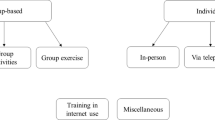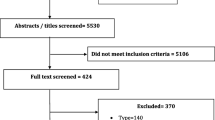Abstract
Assistive technologies (AT) are tools that enhance the independence, safety, and quality of life of older people with functional limitations. While AT may extend independence in ageing, there are racial and ethnic disparities in late-life AT use, with lower rates reported among Hispanic older populations. The aim of this study was to identify barriers experienced by Hispanic community-living older adults for using AT. Sixty Hispanic older adults (70 years and older) with functional limitations participated in this study. A descriptive qualitative research design was used guided by the principles of the Human Activity Assistive Technology Model to gain in-depth understanding of participants’ perspectives regarding barriers to using AT devices. Individual in-depth semi-structure interviews were conducted, using the Assistive Technology Devices Cards (ATDC) assessment as a prompt to facilitate participants’ qualitative responses. Data analysis included descriptive statistics and rigorous thematic content analysis. Lack of AT awareness and information, cost of AT, limited coverage of AT by heath care plans, and perceived complexity of AT were the predominant barriers experienced by the participants. A multi-level approach is required for a better understanding of the barriers for using AT devices. The personal, contextual, and activity-based barriers found in this study can be used to develop culturally sensitive AT interventions to reduce existent disparities in independent living disabilities among older Hispanics.
Similar content being viewed by others
References
United States Census Bureau. International data base. 2013. http://www.census.gov/population/international/data/idb/informationGateway.php. Accessed December 21 2014.
Erickson W, Lee C, von Schrader S. Disability statistics from the 2012 American Community Survey (ACS). Ithaca, NY: Cornell University Employment and Disability Institute (EDI). 2014. www.disabilitystatistics.org. Accessed 1 March 2015.
Centers for Disease Control and Prevention (CDC). Behavioral risk factor surveillance system survey data. Atlanta, Georgia: U.S. Department of Health and Human Services, Centers for Disease Control and Prevention. 2011.
Mann WC, Ottenbacher KJ, Fraas L, Tomita M, Granger CV. Effectiveness of assistive technology and environmental interventions in maintaining independence and reducing home care costs for the frail elderly. A randomized controlled trial. Arch Fam Med. 1999;8:210–7.
Pew R, Van Hemel S. Technology for adapting aging. Washington DC: National Academies Beswick Press; 2004.
Beswick AD, Rees K, Dieppe P, Ayis S, Gooberman-Hill R, Horwood J, Ebrahim S. Complex interventions to improve physical function and maintain independent living in elderly people: a systematic review. Lancet. 2008;371:725–35.
Wilson DJ, Mitchell JM, Kemp BJ, Adkins RH, Mann W. Effects of assistive technology on functional decline in people aging with disabilities. Assist Technol. 2009;21:208–17.
Freedman VA, Martin LG, Cornman J, Agree E, Schoeni RF. Trends in assistance with daily activities: racial/ethnic and socioeconomic disparities persist in the U.S. older population. In: Cutler DM, Wise DA, editors. Health at older ages: the causes and consequences of declining disability among the elderly. University of Chicago Press; 2009. pp. 411–438.
Hartke RJ, Prohaska TR, Furner SE. Older adults and assistive devices: use, multiple-device use, and need. J Aging Health. 1998;10:99–116.
Tomita MR, Mann WC, Fraas LF, Stanton KM. Predictors of the use of assistive devices that address physical impairments among community-based frail elders. J Appl Gerontol. 2004;23:141–55.
Resnik L, Allen SM. Racial and ethnic differences in the use of assistive devices for mobility: effect modification by age. J Aging Health. 2006;18:106–24.
Kayen HS, Yeager P, Reed M. Disparities in usage of assistive technology among people with disabilities. Assist Technol. 2008;20:194–203.
Connell J, Grealy C, Olver K, Power J. Comprehensive scoping study on the use of assistive technology by frail older people living in the community, Urbis for the Department of Health and Ageing. Commonwealth Department of Health and Ageing: Canberra; 2008.
McCready C, Tinker A. The acceptability of assistive technology to older people. Ageing Soc. 2005;25:91–110.
Peek S, Wouters EJ, van Hoof J, Luijkx KG, Boeije HR, Vrijhoef HJ. Factors influencing acceptance of technology for aging in place: a systematic review. Int J Med Inform. 2014;83:235–48.
Chiu CWY, Mann WC. The effect of training older adults with stroke to use home-based assistive devices. OTJR. 2004;24:113–20.
Phillips B, Zhao H. Predictors of assistive technology abandonment. Assist Technol. 1993;5:36–45.
Mann WC, Goodall S, Justiss MD, Tomita M. Dissatisfaction and nonuse of assistive devices among frail elders. Assist Technol. 2002;14:130–9.
Mann WC, Karuza J, Hurren D, Tomita M. Needs of home-based older persons for assistive devices: the University at Buffalo rehabilitation engineering center on aging consumer assessment study. Technology and Disability. 1993;2:1–11.
Resnik L, Allen S, Insenstadt D, Wasserman M, Lezonni L. Perspectives on Use of Mobility Aids in a Diverse Population of Seniors: Implications for Intervention. Disabil Health J. 2009;2:77–85.
Merriam SB. Qualitative research: a guide to design and implementation. San Francisco, CA: Jossey-Bass; 2009.
Cook A, Miller JM. Cook & Hussey’s assistive technologies: principles and practice. 3rd ed. St. Louis, MO: Mosby; 2008.
Guest G, Bunce A, Johnson L. How many interviews are enough?: an experiment with data saturation and variability. Field Methods. 2006;18:59–82.
Morse JM. Designing funded qualitative research. In: Denzin NK, Lincoln YS, editors. Handbook of qualitative research. Thousand Oaks, CA: Sage; 1994. p. 220–35.
Crum RM, Anthony JC, Bassett SS, Folstein MF. Population-based norms for the Mini-Mental State Examination by age and educational level. J Am Med Assoc. 1993;18:2386–91.
Folstein MF, Folstein SE, McHugh PR. Mini-Mental State: a practical method for grading the cognitive state of patients for the clinician. J Psychiatr Res. 1975;12:189–98.
Bird HR, Canino G, Stipec MR, Shrout P. Use of the Mini-mental State Examination in a probability sample of a Hispanic population. J Nerv Ment Dis. 1987;175:731–7.
Patton MQ Qualitative research and evaluation methods. Thousand Oaks, CA: Sage; 2002.
Barett L. Halthy@home: AARP foundation. 2008.
Gitlow L Technology use by older adults and barriers to using technology. Phys Occup Ther Geriatr. 2014;32:271–80.
Ocepek J, Prosic Z, Vidamar G. Assistive technology and its role among the elderly—a survey. Informatica Medica Slovenica. 2012;17:9–15.
Waldron D, Layton N. Hard and soft assistive technologies: defining roles for clinicians. Aust Occup Ther J. 2008;55:61–4.
Mann WC, Granger C, Hurren D, Tomita M, Charvat B. An analysis of problems with canes encountered by elderly persons. Phys Occup Ther Geriatr. 1995;13:25–49.
Steggell CD, Hooker K, Bowman S, Choun S, Kim SJ. The role of technology for healthy aging among Korean and Hispanic women in the United States: a pilot study. Gerontechnology. 2010;9:433–49.
Gitlin LN. Why older people accept or reject assistive technology. Generations. 1995;19:41–7.
Centers for Medicare and Medicaid Services. Medicare coverage of durable medical equipment and other devices. 2008. http://www.medicare.gov/Pubs/pdf/11045.pdf. Accessed 10 February 2015.
Carlson D, Berland B. Highlights from the NIDRR/RESNA/University of Michigan survey of assistive technology and information technology use and need by persons with disabilities in the United States. 2007. http://www.resna.org/taproject/library/bibl/highlights.html. Accessed 21 November 2014.
Layton N Barriers and facilitators to community mobility for assistive technology users. Rehabil Res Pract. 2012. doi:10.1155/2012/454195.
Commission for the Assessment of the Health System of the Puerto Rico Commonwealth. Assessment of the Puerto Rico health system. 2005. https://apoyoalcuidador.files.wordpress.com/2007/10/informe_final_sist_salud_pr_gobernador.pdf. Accessed 12 March 2015.
Center for Technology and Aging. Assistive technologies for functional improvement. 2010. http://www.techandaging.org/AssistivedraftTechnologyReview.pdf. Accessed 12 March 2015.
Baker J, Bass G. Assistive technology and older adults: the journey through caregiving. Fargo, ND: North Dakota State University. 2003. http://www.ndsu.edu/ndsu/aging/ caregiver/pdf/assistive/manual.pdf. Accessed 15 January 2015.
Skymne C, Dahlin-Ivanoff S, Claesson L, Eklund K. Getting used to assistive devices: ambivalent experiences by frail elderly persons. Scand J Occup Ther. 2012;19:194–203.
Author information
Authors and Affiliations
Corresponding author
Appendix
Appendix
INTERVIEW GUIDE QUESTIONS
-
1)
What do you think are the barriers or obstaces to using assistive technology devices?
-
2)
What are the disadvantages of using assistive technology devices?
-
3)
What might stop you from using asssitive technology devices?
-
4)
Is there anything else that I should know about what problems face older people for using asssitive technology devices?
Rights and permissions
About this article
Cite this article
Orellano-Colón, E.M., Mann, W.C., Rivero, M. et al. Hispanic Older Adult’s Perceptions of Personal, Contextual and Technology-Related Barriers for Using Assistive Technology Devices. J. Racial and Ethnic Health Disparities 3, 676–686 (2016). https://doi.org/10.1007/s40615-015-0186-8
Received:
Revised:
Accepted:
Published:
Issue Date:
DOI: https://doi.org/10.1007/s40615-015-0186-8




